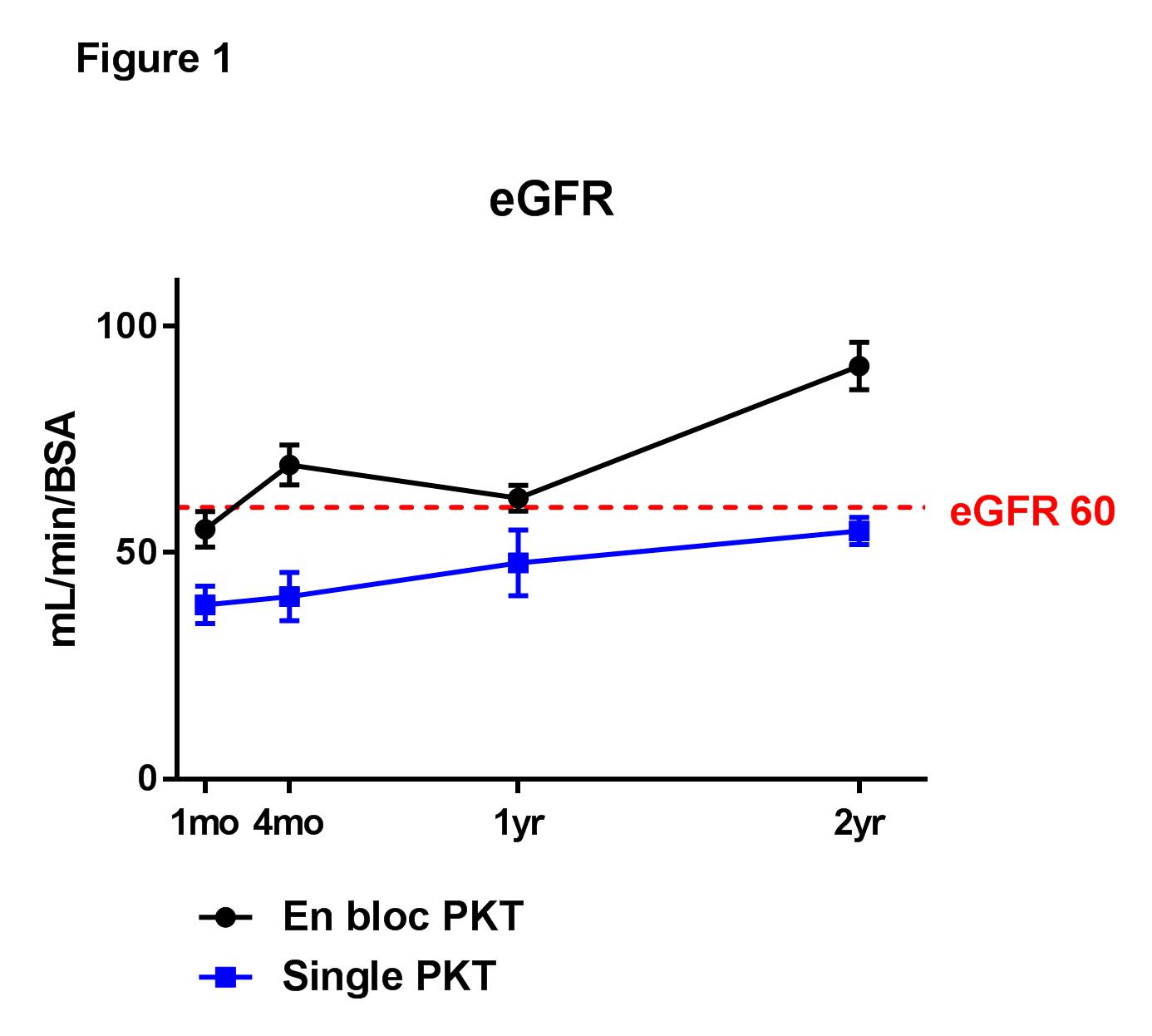Pediatric Kidneys: One for Two or Two for One?
Mayo Clinic AZ, Phoenix, AZ
Meeting: 2019 American Transplant Congress
Abstract number: B156
Keywords: Kidney transplantation, Pediatric
Session Information
Session Name: Poster Session B: Kidney Donor Selection / Management Issues
Session Type: Poster Session
Date: Sunday, June 2, 2019
Session Time: 6:00pm-7:00pm
 Presentation Time: 6:00pm-7:00pm
Presentation Time: 6:00pm-7:00pm
Location: Hall C & D
*Purpose: Kidneys from very young pediatric donors continue to be underutilized due to concerns for technical complications and hyperfiltration injury. The decision to transplant these kidneys individually or as a pair remains controversial. In order to investigate this in more detail, we compared outcomes in adult pediatric kidney transplant (PKT) recipients receiving en bloc and solitary kidneys.
*Methods: Between 2007 and 2018, 51 adult PKT recipients from donors weighing <20 kg were identified at Mayo Clinic Arizona. 36 adult recipients received en bloc PKT; 15 received a solitary PKT. Results were analyzed using chi-square, unequal variance t-tests and Kaplan-Meier survival analysis.
*Results: In comparing en bloc and solitary PKT groups, no differences were observed in recipient age (p=0.1512) or BMI (p=0.2161). Recipient weight was lower in the solitary PKT group (58.9±7.8vs. 69.7±12.7, p=0.0037). No differences were observed in donor age (p=0.3780), weight (p=0.1931), BMI (p=0.6116) or KDPI score (p=0.3814). No differences were observed in measured donor kidney length (right, p=0.4829; left, p=0.918). eGFR was lower in the solitary PKT group at 4 months (p=0.0016), 1 year (p=0.0318) and 2 years (p=0.0066) (Figure 1). No differences in proteinuria were observed between groups at 1 month, 4 months, 1 year and 2 years (p=0.9324). No significant chronic tubulointerstitial damage was appreciated at 4 months and 1 year by protocol biopsy. No differences were observed in patient (100.0% vs. 100.0%, p>0.9999) or allograft survival (94.4% vs. 93.3%, p>0.9999) at 1 year when comparing en bloc and solitary PKT.
*Conclusions: Good outcomes can be achieved using solitary PKT with appropriate donor-recipient pairing although the differences observed between donor renal mass and recipient body mass are not inconsequential. A lower, albeit satisfactory eGFR, was observed in solitary PKT recipients at 1 and 2 years post-transplant. Lack of proteinuria and biopsy changes supporting hyperfiltration injury suggest that this finding is due to ongoing renal mass-recipient volume mismatch. When deciding on how to best use PKT, the balance of maximizing organ utilization and recipient outcomes should be carefully weighed.
To cite this abstract in AMA style:
Das D, Harbell J, Mathur A, Singer A, Hewitt W, Reddy KS, Moss A, Heilman R, Jadlowiec C. Pediatric Kidneys: One for Two or Two for One? [abstract]. Am J Transplant. 2019; 19 (suppl 3). https://atcmeetingabstracts.com/abstract/pediatric-kidneys-one-for-two-or-two-for-one/. Accessed December 18, 2025.« Back to 2019 American Transplant Congress

